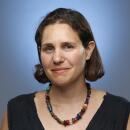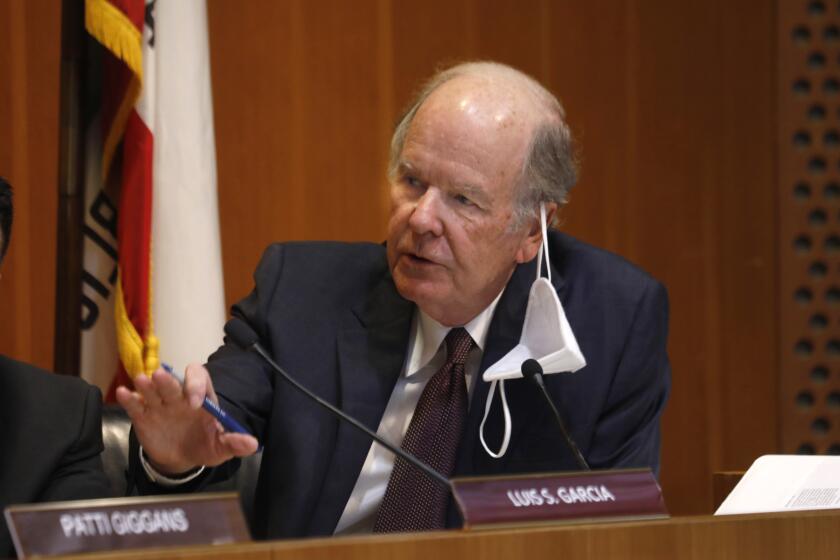The California schools named after the parents who led desegregation are now almost 100% Latino. Does it matter?
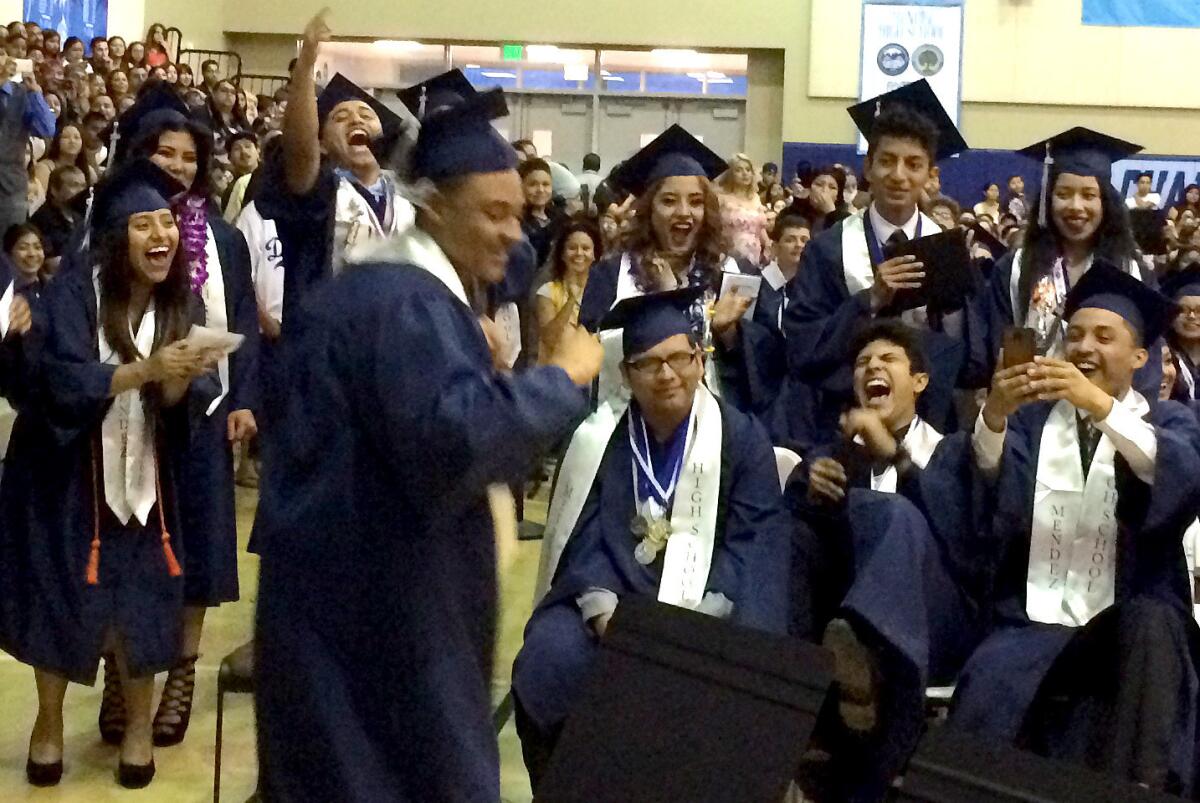
- Share via
Seven decades ago, Sylvia Mendez’s parents went to court to fight for her right to attend a predominantly white school in her Orange County neighborhood.
On a recent evening, she sat in a place of honor on the stage of a Boyle Heights school that bears their name.
As student mariachis in royal blue suits and gold tassels played “Las Mañanitas” in celebration of her recent 80th birthday, she beamed and covered her face with her hands, wiping away tears.
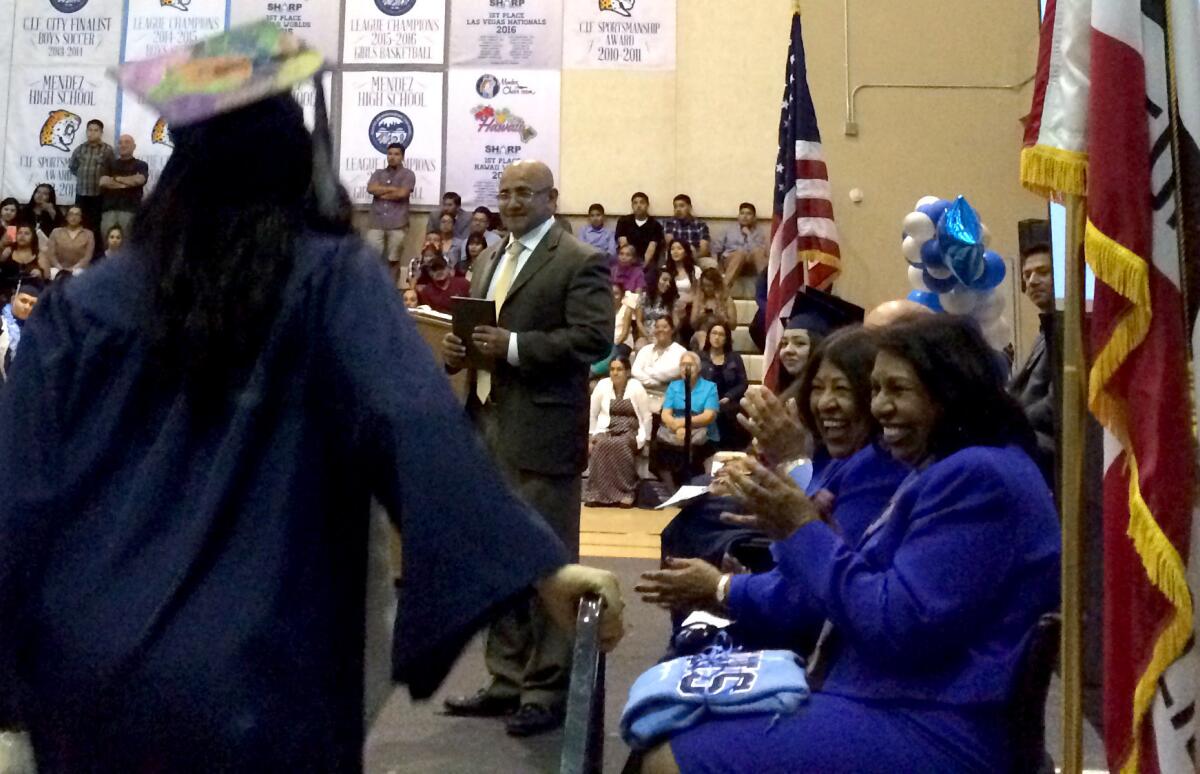
Her parents, Felicitas and Gonzalo Mendez, won a battle to ensure that she and other children would not be relegated to schools for children of Mexican heritage. Now as Mendez High School’s graduation speaker, she looked out at a sea of Latino faces.
“My parents thought that everything was going to be integrated forever,” Mendez said later from her home. “Who would have imagined that we would have this kind of segregation in our schools?”
Eight years before the Supreme Court took on Brown v. Board of Education, Mendez et al v. Westminster School District laid the groundwork for equal access to education in California and the nation.
But it was only in the 1980s that many people heard of it — after Felicitas Mendez urged Sylvia and her brothers to get out and share the story of the fight that had been for all children, not just for them.
My parents thought that everything was going to be integrated forever. Who would have imagined that we would have this kind of segregation in our schools?
— Sylvia Mendez
After decades as a nurse, Sylvia Mendez began visiting students to talk about segregation. She was appalled by some of what she saw: derelict inner-city schools, isolated minorities. At first, she said, she came out “gangbusters,” declaring “we’re the same as we were in 1945.”
But then, in some of those schools, she noticed exceptional teachers and innovative programs. Over time, she began to run into people she’d talked to when they were in high school who had gone on to do well in college and now were young professionals. When she received an honor at the White House, she met one who’d become a lawyer.
They wanted us to leave those schools and be maids for white people.
— Sylvia Mendez
She also noticed that the Latino students she talked to had a pride in their heritage and an interest in their history very different from when she was growing up. She was impressed when they delivered complex speeches in Spanish. Her own parents, eager to raise good Americans, had encouraged English; her father insisted she call him Daddy, not Papi.
“I have a completely different outlook than when I first went out there,” she said. “We’re not the same as in 1945.”
When Mendez entered elementary school during World War II, about 80% of Mexican American students in Orange County attended segregated schools where speaking Spanish was prohibited, boys trained for industrial jobs, and girls were taught how to cook and crochet.
“They wanted us to leave those schools and be maids for white people,” she told Mendez High School students for a book they created about the lawsuit with the help of the writing-focused nonprofit group 826LA. “Mexican schools would only be half a day so the students would get out at noon and go work on the farms.”
Her parents, both U.S. citizens, were outraged. They hired a civil rights lawyer who encouraged them to unite with other families from school districts in a lawsuit arguing that the treatment of their children was unconstitutional.
The strategy worked. The U.S. District Court ruled in 1946 that forcing students of Mexican ancestry into separate schools violated the 14th Amendment’s promise of equal protection.
NEWSLETTER: Get essential California headlines delivered daily >>
After an appeals court upheld the decision, Gov. Earl Warren signed legislation that broadened it, making California the first state to officially ban segregated neighborhood schools. In 1954, as chief justice of the Supreme Court, Warren would apply the argument from Mendez v. Westminster when he wrote the unanimous decision in Brown v. Board of Education, the landmark case that ruled that state laws that segregated schools were unconstitutional.
Yet, lifting legal barriers failed to ensure integration. Today, Latino students in California are the most segregated in the nation, and Los Angeles is the “epicenter” of the phenomenon, according to the Civil Rights Project at UCLA.
It’s a dramatic shift from the 1970s, when the average Latino student in California attended a school with a white majority and busing was mandatory in some districts.
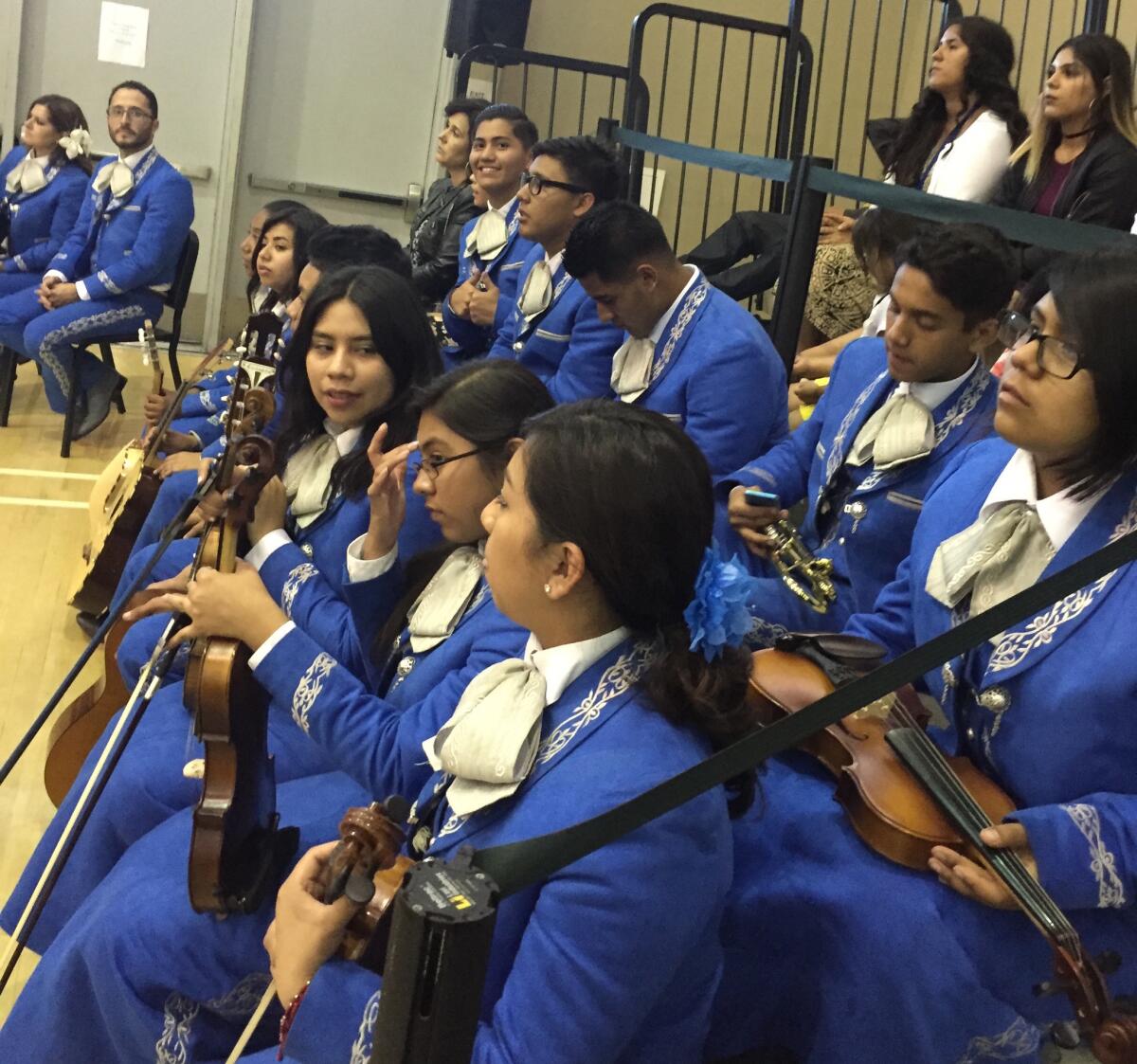
Most schools in Los Angeles, including Mendez, are doubly segregated in that the student body is predominantly minority and underprivileged. As these students lack the influence and resources that middle-class families can wield on behalf of their children, social stratification tends to increase.
But integration is not a viable solution in Los Angeles. The students at the second largest school district in the nation are about 75% Latino.
“The battles of desegregation don’t exist anymore” in the L.A. Unified School District, said Los Angeles Councilman José Huizar, who represents Boyle Heights.
As a member of the Los Angeles Board of Education, Huizar supported the creation of Mendez High School to relieve chronic overcrowding at Roosevelt High School, as well as to provide an example of how a neighborhood institution can create opportunity.
“Mendez High School is a symbol of great things when we are willing to dream and fight to make it happen,” he said at the graduation.
The school, which opened in 2009, appears to be taking steps to live up to the aspirations. Math and reading results have gone from way below district and state averages to above them in five years. It has partnerships with more than a dozen organizations. One called Promesa Boyle Heights strives to give students added community support and teaches parents how to advocate for them.
Mendez High School is a symbol of great things when we are willing to dream and fight to make it happen.
— Los Angeles Councilman JosĂŠ Huizar
At the graduation, with most of the presentations in Spanish as well as English, the mood was exuberant and students wore caps emblazoned with messages such as: “Brown Pride,” “Life, liberty & the pursuit of a law degree.”
Mauro Bautista, the charismatic principal who sends his own children to the school, ticked off the challenges his students had overcome to graduate: one immigrated in ninth grade without his parents, another was homeless, a third started working full-time as a 10th-grader. The school’s graduation rate, which started at 50%, now is more than 90%, he said.
Mendez embraced the spirit of ethnic pride as she addressed the students: “I want you to promise you’ll never give up your culture, you will never give up your language but continue to cherish it.”
It was a well-practiced speech. The high school with the Mendez family name was the second almost exclusively Latino school she had spoken to that evening.
With high school students, she said, she always likes to “bring in the positive” and promote perseverance, “my favorite word.”
To college students, whose campuses usually are more integrated, she has a different speech. She tells them, “You’re the ones who have to find a way to get rid of de facto segregation.”
She does not see it happening in her lifetime, but she still hopes it will happen in theirs.
Twitter: @dhgerson
ALSO
From living in cars to UC Davis — one student’s journey
Three things to know about how L.A. schools are using your money
How UCLA is boosting campus diversity, despite the ban on affirmative action
More to Read
Sign up for Essential California
The most important California stories and recommendations in your inbox every morning.
You may occasionally receive promotional content from the Los Angeles Times.



